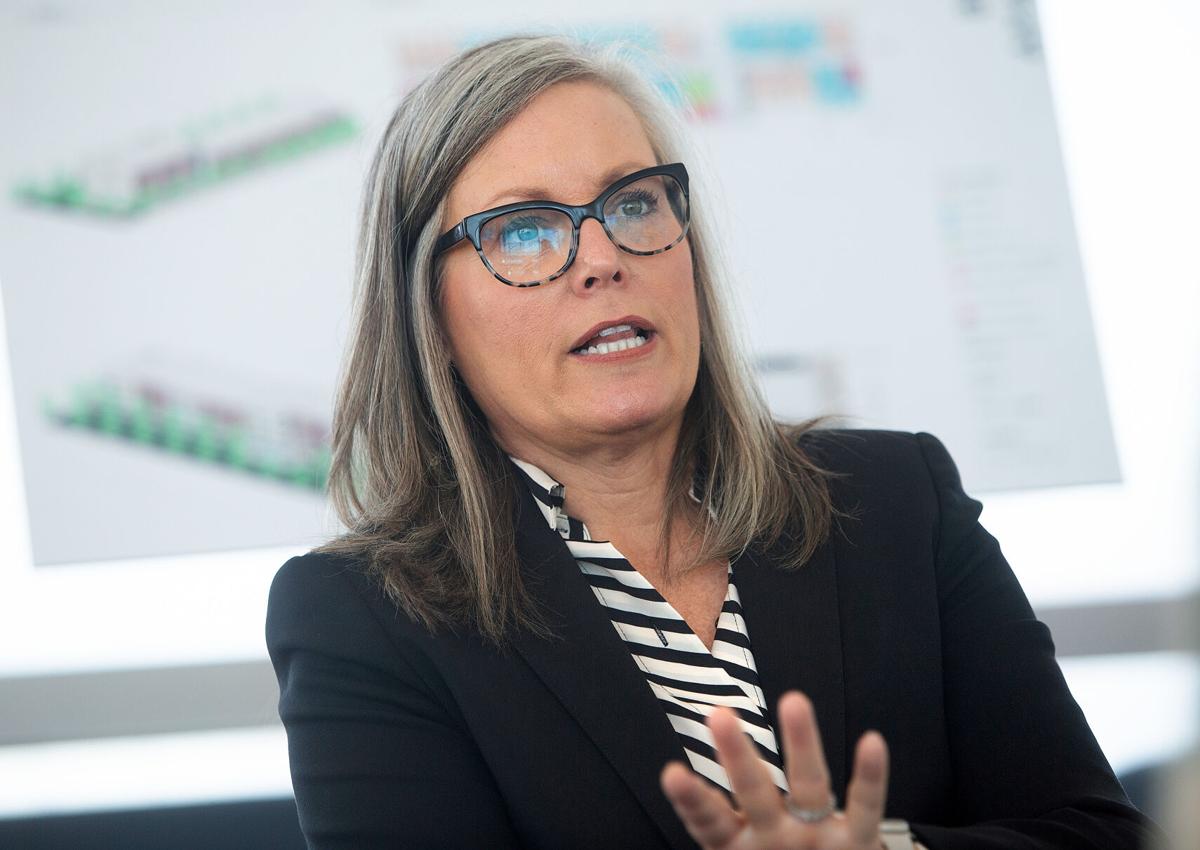More than 34,000 Arizona state government employees are now eligible to get up to 12 weeks off with pay when they have new children.
The new policy immediately covers those whose newborns, adoptions and foster placements occurred as far back as the first of the year.
Under direction from Democratic Gov. Katie Hobbs, the Department of Administration implemented a “pilot project’’ on Thursday creating an exception from existing rules governing the amount of paid leave available, which were based on the number of years of service.
Each new parent will be entitled to up to 12 weeks off for any new baby in the house during a 12-month period.
It doesn’t have to all be taken at the time of birth, or in consecutive weeks, as long as the employee works a total of 12 weeks sometime during that 12-month period.
The leave also is structured so that couples who both work for the state each can take up to 12 weeks off, for a total of nearly half a year of paid time off between the two of them.
The move essentially is an extension of benefits available under the federal Family Medical Leave Act. That act provides for up to 12 weeks of leave for specified family and medical purposes — not just involving a new child — without a worker fearing loss of the job. But that leave is unpaid, meaning it effectively is available only to those who can afford to be without income for three months.
More paid sick leave, too
Also changing is the amount of paid sick leave that state workers can accumulate to use not only for personal reasons but also for reasons such as taking a child to a doctor.
That is now capped at 40 hours in any year. The new program boosts it to 480 hours — 12 weeks.
Hobbs, in a prepared statement, said the changes fulfill a commitment she made after taking office in January to extend paid family leave benefits. This is about more than helping the affected workers, she said.
“I believe that a workplace that supports its working families is one that is best equipped to serve the people of Arizona,’’ the governor said.
That sentiment was echoed by Elizabeth Alvarado-Thorson, Hobbs’ hand-picked director of the Department of Administration.
“These new paid family leave benefits allow more flexibility for state employees and prioritize important bonding time for families,’’ she said in a written statement. “It will also strengthen the state’s retention and recruitment efforts and keep the state competitive for top talent.’’
No legislative OK needed
Hobbs gets to do this without legislative permission because of state personnel rules.
They specifically allow the Department of Administration to “implement a temporary pilot project to improve efficiency, productivity, or accountability in the state personnel system.’’ There appear to be no limits on the kinds of changes that can be put into place.
“The project may include an activity or procedure that is not in accordance with these rules,’’ the provision states. About the only restriction is that the pilot program can last no more than two years.
After the two years, if the state wants to continue the program, the Department of Administration will have to craft a permanent change in the rule, said its spokeswoman, Megan Rose. That would have to be approved by the Governor’s Regulatory Review Council after public hearings are held.
None of this requires legislative approval because lawmakers already gave permission for pilot projects like this, Rose said.
UA employees
Not all state employees will get the new benefits. The change affects only those within the state personnel system.
That excludes those working for the state’s three universities, the courts and the Legislature. It also excludes the state Department of Public Safety, which has its own personnel system, Rose said.
But documents provided by the Arizona Board of Regents show all three state universities, including the University of Arizona, already offer 12 weeks of paid leave for employees, though the terms for each vary slightly.
Also, DPS is moving to align its family leave policies with what the governor announced, said DPS Sgt. Eric Andrews.
Some restrictions apply
Even among those within the affected state system, paid parental leave will be available only to those who have worked for a state agency for at least 12 months during the past seven years. They also would have had to work a minimum of 1,250 hours during the past year; full-time employment generally is considered 2,080 hours a year.
There are some other conditions — including that this isn’t simply an excuse for a new parent to get a vacation. The rules for the pilot project say paid parental leave is available “as long as an employee has continuing parental role with the child whose birth was the basis for the leave entitlement.’’
State workers are also precluded from stacking the new paid benefits with the FMLA leave to give employees 24 weeks away without fear of losing a job: Any paid time off will also reduce the available time for unpaid leave.
The program is not available for workers prior to the birth or placement of a child. Instead, anyone needing time off for medical or legal reasons would instead have to use their regular accumulated paid leave balances or take leave without pay.
There also are provisions giving state agencies the ability to defer or limit paid parental leave “based on operational requirements to meet the agency’s statutorily required mission.’’
Get your morning recap of today's local news and read the full stories here: tucne.ws/morning





